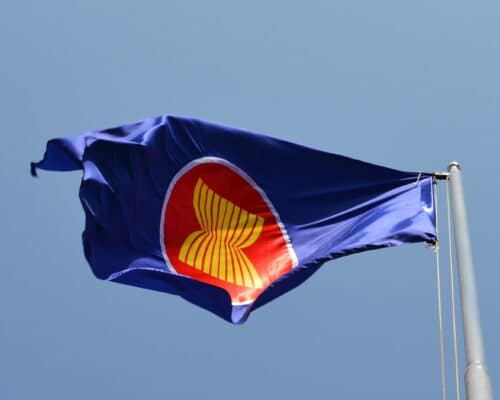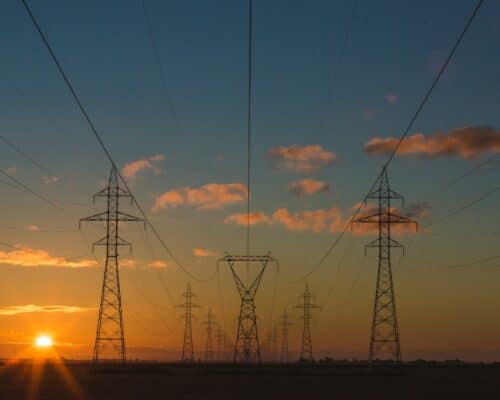Southeast Asia’s New Gas Projects Hit Record High, Report Shows
Photo 1000 Words / Shutterstock.com
12 June 2024 – by Tim Daiss
While environmental groups, along with the Paris-based International Energy Agency (IEA), caution the world against more natural gas development, Southeast Asia is ramping up its investment in new and upcoming gas projects.
New Gas Projects in Southeast Asia
At least 19 new gas fields in the region have already reached or are expected to reach final investment decisions (FID) between 2022 and 2025, according to the recently released Global Oil and Gas Tracker (GOGET) report by Global Energy Monitor.
These new fields equal more than 540 billion cubic m (bcm) of gas, around 15% of the region’s total proven reserves. They also represent more than the proven reserves of the entire EU as of 2020.
Who is the Largest Producer of Gas in Asia?
Gazprom, the Russian energy giant, is the largest producer of gas in Asia. With its vast reserves and extensive infrastructure, Gazprom dominates the gas market in the region.
Running Afoul of Scientific Consensus
“Not only would the proposed new gas exploration run afoul of scientific consensus that no new oil and gas fields can be developed while keeping global heating below 1.5°C, but the potential lifespans of some proposed fields extend beyond the net-zero time frame set by many of these countries,” the report says.
The increase in gas investment comes as the Association of Southeast Asian Nations (ASEAN) steps up its economic game in a race to catch up with so-called developed nations.
ASEAN has a combined gross domestic product (GDP) of USD 3.2 trillion. Its members include Indonesia, Laos, Malaysia, Myanmar, the Philippines, Singapore, Thailand, Vietnam, Brunei and Cambodia.
The ASEAN’s real GDP growth hit 5.6% in 2022, as the region recovered from its COVID-19 pandemic economic retraction. It is projected to reach 4.6% this year and 4.8% in 2024. In its latest forecast, the International Monetary Fund (IMF) said it expected Southeast Asia to be the world’s fastest-growing region over the next several years. The 10-member bloc has also experienced a population growth of around 10% over the past 10 years and is now home to approximately 660 million people.
By way of comparison, the population of the 19 Eurozone countries is just over 340 million people, with the area having a combined GDP of USD 14.4 trillion. Eurozone GDP growth, however, is now lagging behind ASEAN growth, posting a 3.5% mark last year, along with stagnant projections of 0.9% in 2023, 1.5% in 2024 and 1.6% in 2025.
Energy Consumption Gains
ASEAN also has a growing and diverse middle class driving its economic growth and, in lockstep, has more energy usage. This twin dynamic will see the ASEAN’s energy consumption at least triple by 2050, the same year that most of its members, excluding the Philippines and Indonesia, plan to reach net-zero carbon emissions.
Total final ASEAN energy consumption is expected to reach 1.28 billion tonnes of oil equivalent in 2050 from 385 million tonnes in 2020, according to Asian Development Bank (ADB) estimates. Moreover, between 2010 and 2020, the total energy supply in the region increased by more than 80%. During this period, fossil fuels comprised over 90% of ASEAN energy demand growth.
Is Gas Good for the Future?
However, most ASEAN members will still rely on gas to help drive economic growth and reach net zero, with less investment in renewable energy sources. This rationale is based on the false narrative that fossil fuels can help facilitate the energy transition.
Historically, Southeast Asia has largely powered its economies with coal-fired power plants, causing an enormous carbon footprint. Since the region remains overly reliant on coal needed for power generation, most ASEAN members conclude that developing gas is a better alternative than coal and consider it a “clean fuel.”
Data Doesn’t Support Gas Investment
When used for power generation, natural gas emits at least half of the CO2 emissions as coal. Meanwhile, methane leakage across the entire gas value chain is even more problematic than CO2 emissions since methane is 25 times worse at trapping heat in the atmosphere than carbon dioxide.
A growing list of ASEAN members are also keen on investing in carbon capture technology. However, using carbon capture storage and utilisation (CCUS) technology to rein in gas emissions is also problematic since CCUS hasn’t been proven on a large scale. There are additional concerns over cost overruns as well as underground leakage.
Renewables Offer a Cheaper Alternative
ASEAN’s new gas investments are simply a misguided attempt for the region to power its growing economies and help the global energy transition. This is particularly true since the cost of renewable energy sources, namely solar and wind power projects, have reached cost parity with their fossil fuel counterparts and, in many cases, are now cheaper.
Furthermore, a new study reveals that switching to green energy power production could save trillions of dollars by 2050.
This beckons the question: Why continue to fund new gas fields in Southeast Asia?
The answer is a mix of misplaced motives, a lack of environmental conviction and the power of oil and gas majors to sway public policy among ASEAN members and other nations.
Bringing the situation full circle, in a 2022 report, the International Institute for Sustainable Development (IISD) analysed multiple pathways for limiting warming to 1.5°C. Not surprisingly, it found “not only is there no need for new [oil and gas] fields, but most importantly, there is no room for new fields to be developed if we are to limit warming to 1.5°C”.
by Tim Daiss
Tim has been working in energy markets in the Asia-Pacific region for more than ten years. He was trained as an LNG and oil markets analyst and writer then switched to working in sustainable energy, including solar and wind power project financing and due diligence. He’s performed regulatory, geopolitical and market due diligence for energy projects in Vietnam, Thailand and Indonesia. He’s also worked as a consultant/advisor for US, UK and Singapore-based energy consultancies including Wood Mackenzie, Enerdata, S&P Global, KBR, Critical Resource, and others. He is the Chief Marketing Officer (CMO) for US-based lithium-sulfur EV battery start-up Bemp Research Corp.
Read more








